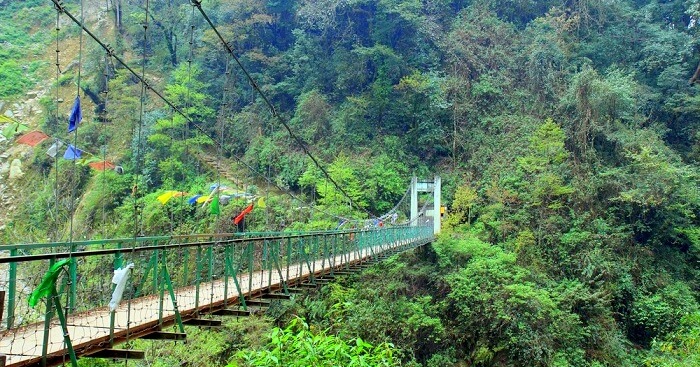Kanchenjunga National Park, named after the majestic Mount Kanchenjunga, is a UNESCO World Heritage Site and one of the most pristine and biodiverse protected areas in the Indian state of Sikkim. The park is located in the eastern Himalayas and shares its borders with Nepal and Tibet. It’s a haven for nature lovers, trekkers, and wildlife enthusiasts due to its rich biodiversity, stunning landscapes, and the opportunity to explore the high-altitude regions of the Himalayas. Here’s what you can discover in Kanchenjunga National Park:
- Biodiversity: The park is home to a remarkable variety of flora and fauna. It harbors a range of ecosystems, from subtropical forests to alpine meadows. The diverse range of habitats supports numerous species, including various endemic and endangered ones.
- Mount Kanchenjunga: The third-highest peak in the world, Mount Kanchenjunga is a central attraction of the park. The park offers various vantage points from which you can witness the mountain’s grandeur.
- Treks and Trails: Kanchenjunga National Park offers treks that allow you to explore its diverse landscapes. The Kanchenjunga Base Camp Trek and the Goechala Trek are popular choices, providing stunning views of the mountain, forests, valleys, and more.
- Flora: The park is home to a wide range of plant species, including rhododendrons, orchids, and various medicinal plants. The transition from subtropical to alpine vegetation is a remarkable sight.
- Fauna: The park is a habitat for several rare and endangered species, including the snow leopard, red panda, Himalayan tahr, musk deer, and more. Birdwatchers will also delight in spotting various Himalayan bird species.
- Villages and Communities: The park is inhabited by various indigenous communities like the Limbu, Rai, and Sherpa. Interacting with the locals provides insights into their traditional way of life and culture.
- Scenic Beauty: The park’s landscapes include lush forests, pristine rivers, cascading waterfalls, alpine meadows, and glacial valleys. The scenic beauty is a major draw for nature enthusiasts and photographers.
- Glacial Lakes: The park is home to several glacial lakes, including the sacred Gurudongmar Lake. These lakes not only add to the natural beauty but also serve as crucial water sources.
- Wildlife Sanctuaries: The park also includes two wildlife sanctuaries—Singalila and Khangchendzonga. These protected areas contribute to the conservation of the region’s biodiversity.
- Cultural Exploration: Engaging with local communities offers opportunities to learn about their traditions, festivals, and lifestyles.
Visiting Kanchenjunga National Park requires permits and adherence to conservation regulations, as the area is ecologically sensitive. The park’s pristine environment, unique ecosystems, and awe-inspiring landscapes make it a must-visit destination for those who wish to experience the wonders of the Himalayas in their raw and untouched form.

